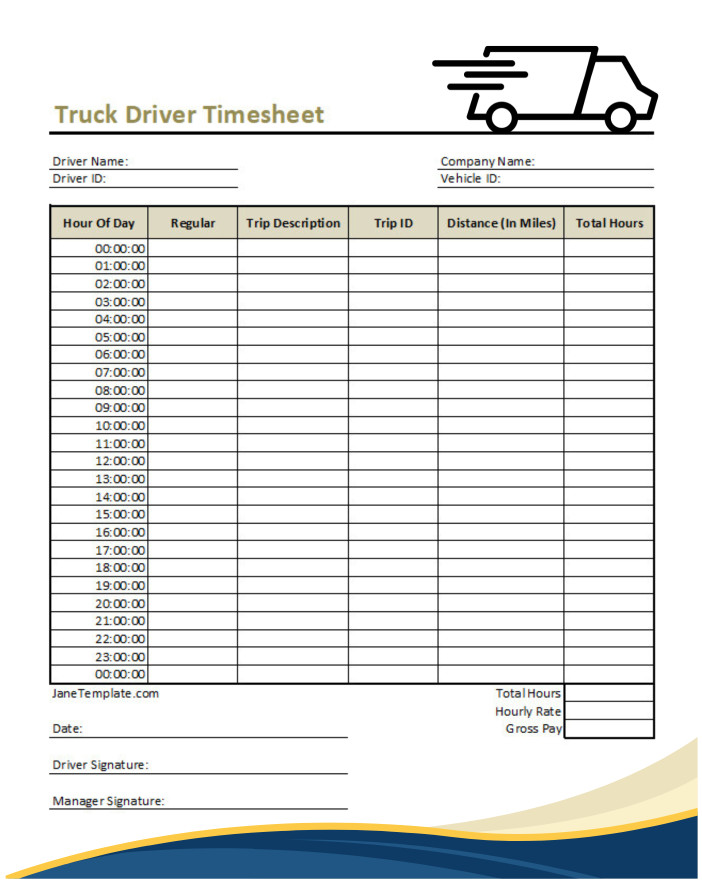A truck driver timesheet is a document that records the hours worked by a driver, including the time spent driving, resting, and performing other duties. It serves as a record of the driver’s activities and is used to calculate their wages, monitor compliance with hours of service regulations, and ensure the driver’s safety and well-being.

Truck driver timesheets play a crucial role in the transportation industry. They not only help trucking companies track the hours worked by their drivers but also ensure compliance with labor laws and regulations.
In this article, we will explore the significance of truck driver timesheets and discuss how they contribute to the overall efficiency of the industry.
Why Should Trucking Companies Use Timesheets?
Trucking companies should use timesheets for several reasons:
- Accurate Payroll: Timesheets provide an accurate record of the hours worked by drivers, ensuring that they are paid correctly and on time.
- Compliance with Labor Laws: Timesheets help companies comply with labor laws and regulations, such as the Fair Labor Standards Act (FLSA) and the Department of Transportation’s hours of service rules.
- Efficient Resource Allocation: Timesheets allow companies to monitor the hours worked by their drivers, enabling them to allocate resources effectively and optimize their operations.
- Driver Safety: Timesheets help companies monitor the hours of service of their drivers, preventing fatigue-related accidents and ensuring the safety of both the driver and other road users.
Truck driver timesheets should be used daily, capturing the start and end times of each shift, as well as any breaks and rest periods. They can be filled out manually using paper forms or electronically using specialized software or mobile applications.
Best Practices for Completing Truck Driver Timesheets
To ensure the accuracy and effectiveness of truck driver timesheets, the following best practices should be followed:
- Record Start and End Times: Drivers should accurately record the start and end times of each shift, including any breaks or rest periods.
- Include Duty Status: Timesheets should indicate the driver’s duty status, such as driving, on-duty not driving, off-duty, or sleeper berth.
- Document Breaks and Rest Periods: Timesheets should document any breaks and rest periods taken by the driver, as required by hours of service regulations.
- Ensure Legibility: Timesheets should be filled out legibly, using clear and concise handwriting or typed entries.
- Review and Sign: Drivers should review their timesheets for accuracy before signing and submitting them to the company.
The Role of Truck Driver Timesheets in Compliance
Truck driver timesheets play a crucial role in ensuring compliance with labor laws and regulations. They help companies monitor and enforce hours of service rules, which limit the number of hours a driver can work to prevent fatigue-related accidents. Timesheets provide a record of driver activities, including driving time, on-duty time, and rest periods, which can be used to demonstrate compliance during inspections or audits.
Download the Truck Driver Timesheet Template!
Streamline truck driver time tracking with our Truck Driver Timesheet Template for Excel, available for immediate download.
This Excel template offers a user-friendly and customizable format for recording truck driver hours, including sections for date, trip details, and hours worked. Ideal for truck drivers or fleet managers, this template ensures accurate and organized time tracking.
Download it now for a convenient and effective solution to manage truck driver hours.
Truck Driver Timesheet Template Excel – Download